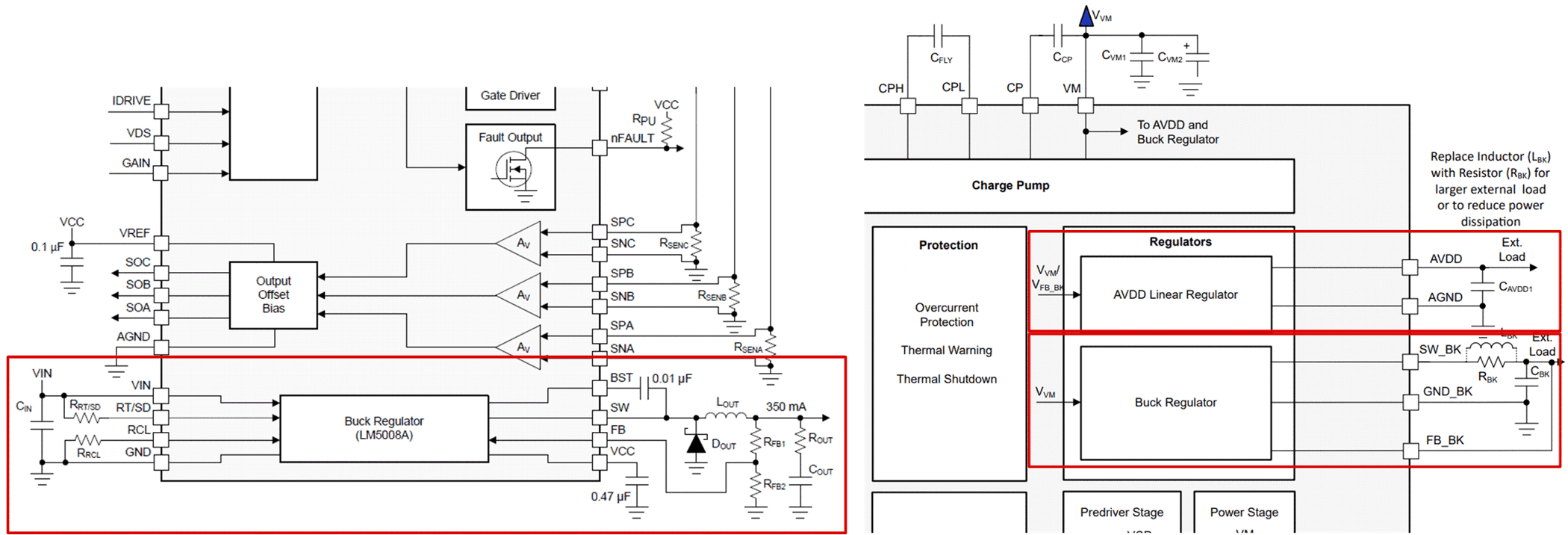SLVAES1A June 2020 – May 2022 DRV8300
- Trademarks
- 1Motor Considerations and Why Brushless DC Motors?
- 2Motor Driver Architecture
- 3Texas Instruments' Brushless-DC Motor Drivers
- 4Conclusion
- 5Revision History
2.7 Power Integration
To supply external rails to power other devices or circuits in the system (such as MCUs and CSA reference voltages), many TI BLDC motor drivers offer integrated buck regulators and linear dropout regulators (LDOs) regulators. These regulators offer high efficiency without the need
Integrated buck regulators can support up to 600-mA external load current depending on the device. The output voltage of the regulator can be adjustably designed or configured over SPI/hardware on many devices. Integrated LDOs can support up to 100-mA external load current for a fixed 3.3-V or 5-V rail (AVDD or DVDD) depending on the device.
 Figure 2-12 Examples of Buck and LDO
Regulators Integrated in BLDC Motor Drivers
Figure 2-12 Examples of Buck and LDO
Regulators Integrated in BLDC Motor Drivers